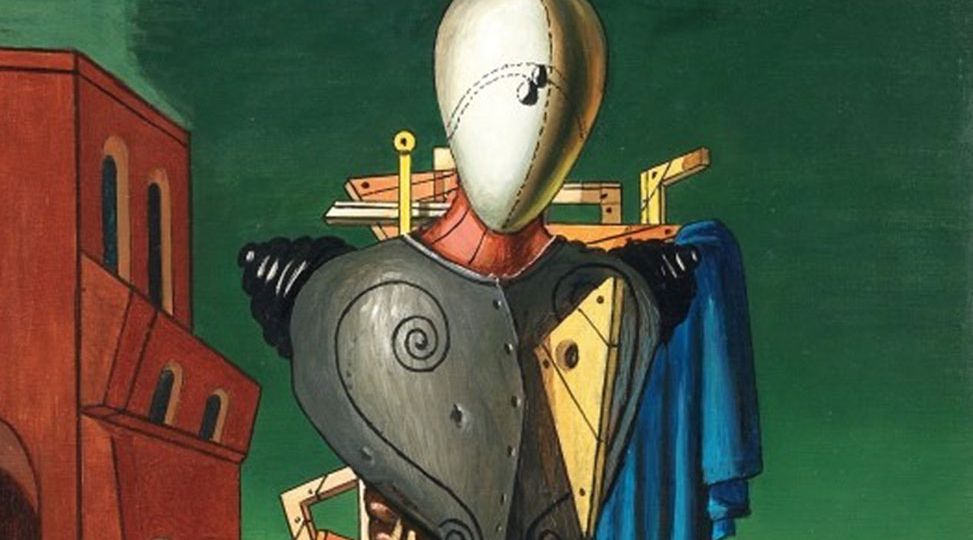
A Broken Personality Repairs Itself
The Film Hugo as an Illustration of Jung’s and Beebe’s Theories
Vicky Jo Varner, November 5, 2013
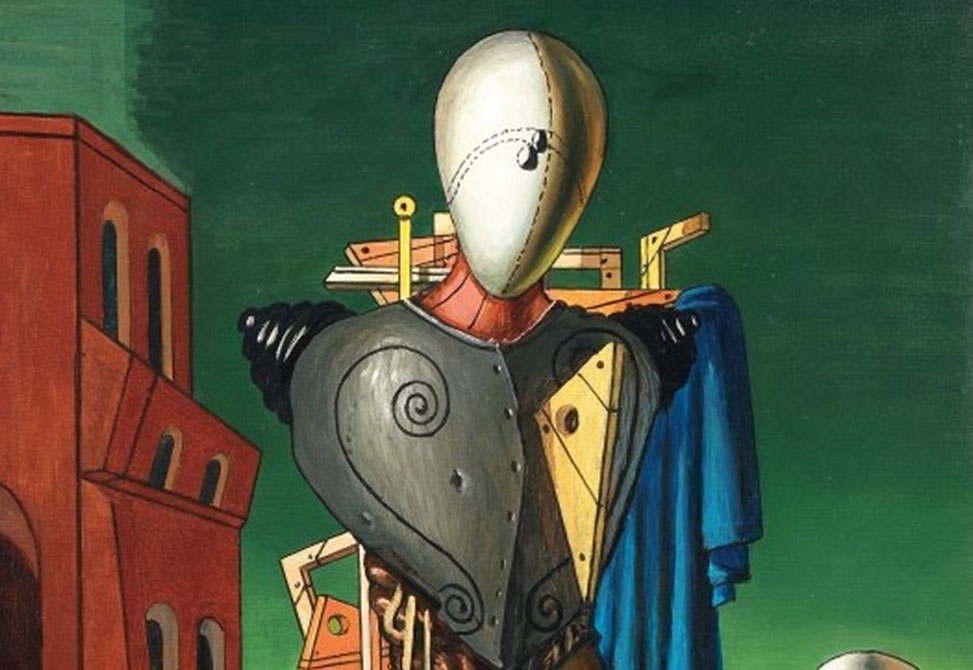
The film Hugo presents a compelling metaphor for the process of individuation through the interplay of an adolescent boy with others in his environment during the 1930s. The movie as a whole represents a personality characterized by superior introverted thinking with auxiliary extraverted intuition (INTP), which first differentiates then integrates its eight functions. For this reason, the movie Hugo is a useful illustration of John Beebe’s eight-function model, as well as Jung’s concept of individuation.
Beebe’s eight-function eight-archetype model acknowledges Jung’s hypothesis of there being superior, auxiliary, tertiary, and inferior functions, but adds an additional four levels for the functions that are resident in the unconscious. Beebe (2007a) justified this approach by pointing out that “we each actually make use of all the function-attitudes, those eight options of consciousness that Jung originally described” (p. 8). Beebe’s work with this model and his clinical observations led him to “postulate archetypal qualities adhering to each of the positions” (p. 8).
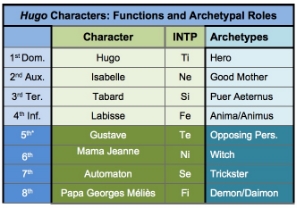
Coincidentally, this film (which was nominated for a Best Picture Oscar® is also a fictionalized biography of film pioneer Georges Méliès, who capitalized on the film medium to unleash his mythopoetic imagination. As Beebe noted, “Cinema has grown up concurrently with psychoanalysis, and as close siblings nurtured on a common zeitgeist, the two share a drive to explore and realize the psyche” (Apperson & Beebe, 2009, p. 17). Thus it seems befitting to analyze a film about Méliès psychologically.
The Introverted Thinking Hero – Hugo
Hugo, a twelve-year-old orphan, is on a heroic mission to unlock the mystery of a curious metal automaton he was helping his father repair before his tragic death. Robert Penn Warren (1972) suggested that “the archetypal hero represents the ego’s search for identity and wholeness” (p. xiv), and by the end of the film, Hugo achieves these goals both for himself and for others. He epitomizes the process of introverted thinking, of which Jung (1921/1976) wrote: “It formulates questions and creates theories; it opens up prospects and yields insight” (p. 380). Hugo exemplifies this in a touching monologue to his friend Isabelle during which he explains:
Everything has a purpose, clocks tell you the time, trains take you to places. I’d imagine the whole world was one big machine. Machines never come with any extra parts, you know. They always come with the exact amount they need. So I figured if the entire world was one big machine, I couldn’t be an extra part. I had to be here for some reason. And that means you have to be here for some reason, too. (Scorsese, 2011)
In this speech, Hugo demonstrates that he sees the world as a total system, with everything interlocking and working together. He seems to have “an archetypal sense of the things’ unconscious resonance” (Beebe, 2007, p. 10) and his introverted thinking is an area of strength and pride with him.
He goes on to say, “Maybe that’s why a broken machine always makes me a little sad, because it isn’t able to do what it was meant to do. Maybe it’s the same with people. If you lose your purpose, it’s like you’re broken” (Scorsese, 2011). With these words, Hugo continues to demonstrate his introverted thinking (Ti) concern with the integrity of systems, and is also foreshadowing the effect he will eventually have on the other characters in the movie, most notably Papa Georges, who has indeed lost his purpose and is a “broken” man.
Hugo’s determination is unwavering; as Jung (1921/1976) puts it, “In the pursuit of his ideas he is generally stubborn, headstrong, and quite unamenable to influence” (p. 385). Jung also wrote that introverted thinking can be considered “mystical thinking” (p. 382), reflecting on “visions of numerous possibilities” (p. 382), as represented by Hugo’s assertion that the mystery of the automaton is “like a puzzle. When you put it together, something’s going to happen” (Scorsese, 2011).
Throughout the movie, Hugo behaves heroically with introverted thinking in that he provides the framework or structure bringing all the other characters into a synchronized whole. Capitalizing on his precise analysis of the automaton’s mechanisms, he eventually gets everything working again. As Beebe (2007a) said of the Hero archetype, “This is a part of the psyche that welcomes facing challenges” (p. 9), and Hugo faces many challenges, particularly around his urge to fix the automaton. By completing that task, he also “fixes” the shadowy, less-conscious characters in the film—Georges, Jeanne, and Gustave.
The Extraverted Intuiting Good Parent – Isabelle
According to Kast (1992), the Good Mother archetype represents “our primordial and unfulfilled longings and needs for the maternal” (p. 140) which Hugo, as an orphan, finds in the character of Isabelle. She is likewise an orphan, living with her godparents, “Mama Jeanne” and “Papa Georges” (who we later learn is Georges Méliès). We see Isabelle demonstrating maternal concern for Hugo in several scenes, playing out her archetypal role in this film.
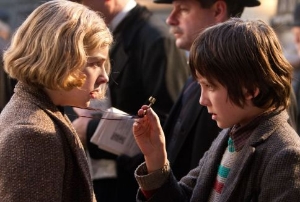
As Jung (1921/1976) wrote, those who favor extraverted intuiting have “a keen nose for anything new” (p. 368) and Isabelle demonstrates this by supporting Hugo in his quest with “extraordinary enthusiasm” (p. 368). She acts as the “natural champion of all minorities with a future” (pg. 369), and her extraverted intuiting represents an area of fostering and protecting.
The Introverted Sensing Eternal Child – Tabard, the Movie Historian
Tabard is a movie historian and author who meets the children in the Film Academy library. Although he is an adult, he represents the Eternal Child archetype in this context through his attitude and mannerisms. Increasing the correspondence with the archetype, Tabard explains how, as a child, he once met Méliès and his sense of wonderment and amazement is expressed when he recalls his first visit to Méliès’ studio, of which he says, “It was like something out of a dream” (Scorsese, 2011). With his big eyes exuding an aura of hero worship, he embodies the Divine Child.
Tabard says that Méliès “is a great passion of mine” (Scorsese, 2011), showing the “enthusiastic perspective” (Hillman, 2005, p. 89) of the Puer Aeternus (Eternal Child). His introverted sensing (Si) represents an area of immaturity and play for him as we see him proudly showing the children his collection of movie artifacts with child-like delight.
His introverted sensing is further evident in his role as a historian, immersed in “the reality of the subjective” (Jung, 1976/1921, p. 395). He is the author of a book that catalogues the history of cinema in exquisite detail, bringing the reality of that period into printed form. He demonstrates a passion for wanting to preserve both the memory and the physical artifacts of early film-making in order to “maintain the quality of the future” (Beebe, 2007a, p. 10).
Tabard’s book on the history of film-making contains a serious error in that he mistakenly believes Méliès to have died during the war. Learning the truth from Hugo and Isabelle leads to a visit to the Méliès house. Tabard’s devotion and glowing childlike admiration for Méliès brings about a major shift in Papa Georges’ character, perhaps because he feels himself “mirrored” respectfully by Tabard’s appreciative gaze.
The Extraverted Feeling Anima/Animus: Labisse, the Bookseller
Here I deviate somewhat from conventional Jungian thought by suggesting that the Anima figure balancing Hugo’s Hero archetype is represented by a male character. Since the character of Labisse is presented with a certain feminine energy and has a caring softness about him, I believe he qualifies as the Anima for the purposes of this analysis. Moreover, Hugo is only twelve years old and therefore at an age where it would not be appropriate to have a female love interest. Jung (1976/1921) states that, “In every case where the individuality is unconscious, and therefore associated with the soul, the soul-image has the character of the same sex” (p. 470), and I would argue that Hugo’s individuality is in the process of “becoming” during most of this film; therefore it is appropriate for Labisse to be male.
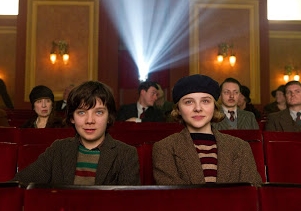
When Labisse discovers that Hugo has fond memories of his father reading Robin Hood, he makes a gift of the book to Hugo, saying, “It was intended for my godson, but now I think it is intended for you” (Scorsese, 2011). As Beebe (2001) wrote, the Anima in film “exerts a protective and often therapeutic effect on someone else” (p. 211). This impulsive act demonstrates the immediacy of extraverted feeling (Fe), for which “it is of the highest importance to establish an intense feeling of rapport with the environment” (Jung, 1976/1921, p. 358). Even though Labisse had earmarked the book as a gift for another, the dictates of circumstances in that moment with Hugo overrode his original intention. In keeping with this archetype, the book could be seen as symbolic, since Hugo, like Robin Hood, must survive as an outlaw in the train station.
The Extraverted Thinking Opposing Personality – Gustave, the Station Inspector
As we move into the shadow realm of the movie, we encounter the extraverted thinking (Te) Opposing Personality represented by Gustave, the Station Inspector. Throughout the film, Hugo is dodging Gustave, who has a penchant for capturing unattended children and shipping them off to an orphanage. Beebe (2004) said the archetype of the Opposing Personality “may be described in the language of character pathology: oppositional, paranoid, passive-aggressive, and avoidant” (p. 107). We see Gustave opposing Hugo and the other orphans he traps, and generally laying down the law with occupants of the station.
Gustave epitomizes extraverted thinking in his adherence to “an objectively oriented intellectual formula” (Jung, 1976/1921, p. 347), such as when he asserts, “You don’t have any parents therefore you must go to the orphanage” (Scorsese, 2011). According to Jung (1976/1921), “‘Oughts’ and ‘musts’ bulk large in this programme” (p. 347), meaning extraverted thinking has strong opinions about how things should be.
We see Gustave bullying another orphan, shouting at him, entangling his leg with a wire snare, and allowing his dog to terrify the small boy. He is a “cruel tyrant … sharp in tone, acrimonious, aggressive” (Jung, 1976/1921, p. 350), demonstrating the negative characteristics of extraverted thinking. Jung (1976/1921) also wrote that “each type of thinking [extraverted and introverted] senses the other as an encroachment on its own province, and … thus the two orientations are incessantly at war” (p. 345). Since Hugo is the film’s Ti hero, Gustave is Hugo’s Te adversary, and embodies an area of frustration and challenge for Hugo.
The Introverted Intuiting Critical Parent – Mama Jeanne
Mama Jeanne is Georges Méliès’ protective wife. She seems like a lovely woman, but when she first meets Hugo, she immediately becomes “icy cold, freezing all action” (Harris, 1995, p. 47). In this way, she embodies the archetype of the Witch. She criticizes Hugo with comments like, “There are things you are too young to understand” (Scorsese, 2011).
Beebe (2007b) says of the Witch archetype, “When we are confronted, for example, with a person or plan whose direction strikes us as fundamentally destructive and dangerous to the things we value, one effective option can be for us to pull rank and set limits” (p. 25). Her introverted intuition (Ni) “just knows” Hugo is problematic—she recognizes the archetype of danger in him and divines how disruptive his presence could be to her husband. Her introverted intuition represents an area of limit-setting and control. Later-on we learn that she is also aware of the archetype of the artist that is lying dormant in her husband and has made herself the guardian of his masterful imagery—she rescued several of his old drawings from the fire and secretly stored them in a hidden box that unexpectedly spills its secrets out at a climactic moment. Perhaps she had an “inner knowing” that someday these artworks would be important, and even become vital in the future. They symbolize the best in Méliès.
The Extraverted Sensing Trickster – The Automaton
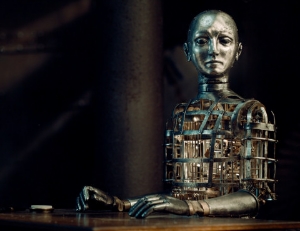
Following Beebe’s eight-level model, this position is represented by the extraverted sensing (Se) function, which has a “sense for objective facts” (Jung, 1976/1921, p. 363). It could be said that the automaton is single-minded in its need to present a fact in the form of a physical drawing, further supporting Jung’s assertion that Se “cannot be anything except concrete and real” (p. 364).
In order to fix the automaton, Hugo steals items to be used as spare parts from Méliès—this behavior leading him astray and putting him in the double bind of risking his freedom for the sake of completing this task. The image of the automaton in a notebook that Papa Georges confiscates exacerbates the rift between Hugo and Méliès; as Beebe (1981) wrote, “It is typical of the trickster, in art and in life, to split people into warring camps” (p. 33). However, Beebe (2007b) also suggested that “it is an enormous step in type development when we are able to make the trickster conscious” (pp. 25-26). When Hugo eventually gets the automaton working, thereby making it “conscious,” it stimulates the development of Méliès and the other shadow characters in the film. This is particularly notable as the film largely revolves around the mystery of this curious silver figure, which makes it fitting to view it as the “archetype of the unconscious” (Jung, cited in Hillman, 1992, p. 256). Through engagement with the automaton, and Hugo’s relentless effort to get it working, every other character in the film likewise begins “working” properly again. This mirrors the view of Kast (1992), who declared, “It is Mercury who moves everything from potentiality to actuality, and it is he who effects transformation” (p. 116).
The Introverted Feeling Demon/Daimon – Papa Georges Méliès
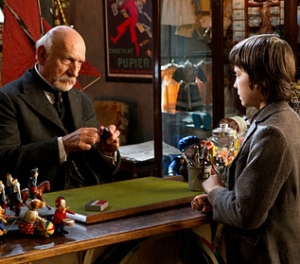
In another scene, Papa Georges demonstrates the pathological narcissism of the Demon, when he self-pityingly laments, “Who am I? A broken wind-up toy!” (Scorsese, 2011). These complaints invite comparison to the automaton and foreshadow the way Hugo “fixes” Méliès later on in the movie.
When sharing his history in flashback, Méliès reveals that, “One night, in bitter despair, I burned all my old sets and costumes” (Scorsese, 2011). In that scene, the silver papier mâché moon prop used in his most famous movie, A Trip to the Moon (Méliès, 1902), is shown prominently on the bonfire, consumed by flames. We thus see the Demon archetype in its destructive mode, effectively eliminating the feminine Anima energy that was previously present in Papa Georges’ life. We subsequently see him sitting in his toy store with a lifeless expression on his face, having lost his vitality, his soul. His identity is likewise lost; until the automaton delivers its message, we have no idea that Papa Georges really is Méliès.
Though initially harshly destructive, his introverted feeling ultimately achieves grace and we see how the “beastly side within all of us … also offers the possibility of extraordinary redemption” (Beebe, June 2010, personal workshop notes). At a climactic moment in the film, Méliès declares of Hugo, “This child belongs to me!” (Scorsese, 2011). This represents a reconnection of the Hero with his least conscious process, which then takes on the beneficent role of the Daimon. Through that exclamation, the introverted feeling represented by Georges redeems his bitterness and restores his dignity. It is as if Méliès ascends from his private hell into heaven.
Méliès makes the greatest transformation during this film, demonstrating Beebe’s admonition that “it’s the devil’s own work to hold [the Demon] to integrity [but he] comes through when held to account” (Beebe, November 2011, personal workshop notes). As Beebe (2007a) explained, this archetype “can deliver insights that are of the highest value” (p. 11).
Images of Individuation
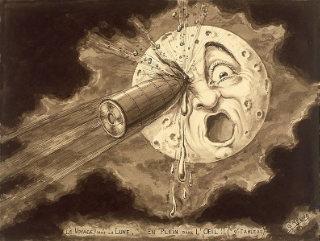
There is another aspect of the Moon to be considered. As Beebe explained, “Luna [Moon] is associated with the metal silver … which Jung has described as the … feminine principle of consciousness” (Apperson & Beebe, 2009, p. 23, italics extant). The automaton is clad in silver metal, representing the feminine, but is initially cold and unresponsive, needing the heart-shaped key to give it life. Once the feminine principle, Eros, is engaged, it magically permeates the various characters represented by shadow archetypes and they collectively stumble toward the light. This represents a healthy integration of the movie’s psyche into an individuated whole, thereby demonstrating the benefit of confronting the shadow and embracing it. As James Hollis (2009) wrote:
Eros is the life force—desire that wishes most to connect, to build, to combine, to fuse, to generate with the other. Eros is an archetypal power whose necessary twin is Logos, the dividing, separating, differentiating energy. In our bodies, minds, souls, both energies are continuously manifest. The one wishes merging, connection; the other splits, divides, and diversifies. One energy without the other balancing it becomes not only one-sided but even demonic. (p. 45)
Hugo is a boy Hero, albeit not a typical one, and the film is the story of his individuation experience. Through mighty feats, he claims all the disowned parts of himself and triumphs against terrible odds. At the film’s end, he stands as a united whole. His journey is far from over, but he has succeeded for the time being. By virtue of his courageous actions in the film, Hugo becomes a whole, individual person. It is just as Jung (1977) wrote of the Hero:
He alone has a genuine claim to self-confidence, for he has faced the dark ground of his self and thereby has gained himself. This experience gives him faith and trust, the pistis in the ability of the self to sustain him, for everything that menaced him from inside he has made his own. (p. 146)
References
Apperson, V. & Beebe, J. (2009). The presence of the feminine in film. Newcastle upon Tyne, UK: Cambridge Scholars Publishing.
Beebe, J. (1981, December). The trickster in the arts. The San Francisco Jung Institute Library Journal. 2:2, 21-54.
Beebe, J. (2001). Jung and film. (C. Hauke & I. Alister, Eds.). Philadelphia, PA: Taylor and Francis.
Beebe, J. (2004). Understanding consciousness through the theory of psychological types. In J. Cambray & L. Carter (Eds.), Analytical psychology: Contemporary perspectives in Jungian analysis (pp. 83-115). New York, NY: Brunner-Routledge.
Beebe, J. (2007a). Type and archetype, Pt, 1: The spine and its shadow. Typeface, 18:2, Summer 2007, 8-12.
Beebe, J. (2007b). Type and archetype, Pt. 2: The arms and their shadow. Typeface, 18:3, Autumn 2007, 22-27.
Beebe, J. (2008). Experiencing the eight mental functions. Workshop, May 20-23, 2008. Indianapolis, IN: Type Resources.
Harris, A. S. (1995). Living with paradox: An introduction to Jungian psychology. Independence, KY: Brooks/Cole Publishing Company.
Henderson, J. (1978). Ancient myths and modern man. In C. G. Jung (Ed.), Man and his symbols. London, UK: Pan Books.
Hillman, J. (1992). Re-visioning psychology. New York, NY: Harper Perennial.
Hillman, J. (1997). The soul’s code: In search of character and calling. New York, NY: Warner Books.
Hillman, J. (2005). Senex and puer. Spring Publications.
Hollis, J. (2009). What matters most: Living a more considered life. New York, NY: Gotham Books.
Jung, C.G. (1976). Psychological types (CW 6). (R. Hull, Ed., & H. Baynes, Trans.). Princeton, NJ: Princeton University Press. (Original material published 1921)
Jung, C. G. (1977). Mysterium Coniunctionis (CW 14). (G. Adler & R. Hull, Trans.). Princeton, NJ: Princeton University Press.
Jung, C. G. (1981). The archetypes and the collective unconscious (CW 9 Part 1). Princeton, NJ: Princeton University Press.
Kast, V. (1992). The dynamics of symbols: Fundamentals of Jungian psychotherapy. New York, NY: Fromm International.
Méliès, G. (Director). (1902). A trip to the moon [Motion picture]. Star-Film.
Myrent, G. & Langlois, G. (1986). First citizen of cinema. Woodbridge, CT: Twayne Publishers.
Myers, I. & McCaulley, M. (1985). Manual: A guide to the development and use of the Myers-Briggs Type Indicator. Mountain View, CA: Consulting Psychologists Press.
Scorsese, M. (Director). (2011). Hugo [Motion picture]. Paramount Pictures.
Warren, R. (1972). Introduction. In D. Wecter, The hero in America. New York, NY: Charles Scribners’ Sons.
Header Image
Giorgio de Chirico, “Il Trovatore” (1960)




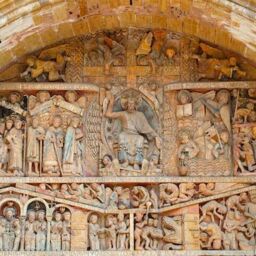
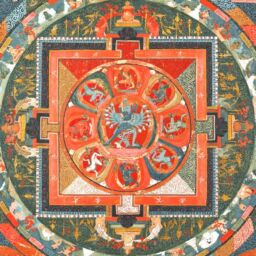
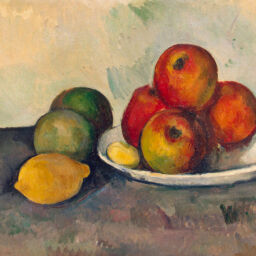
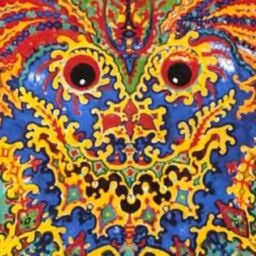
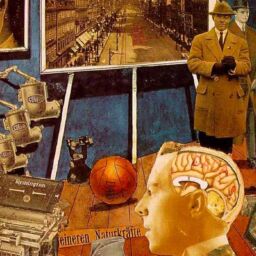
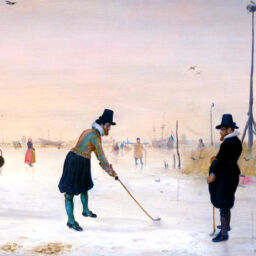
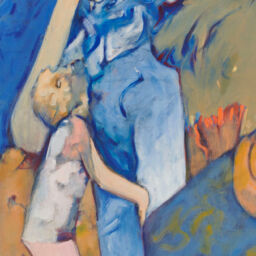
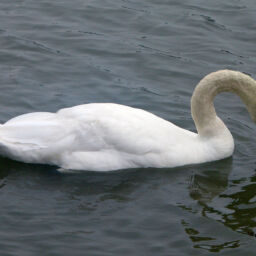
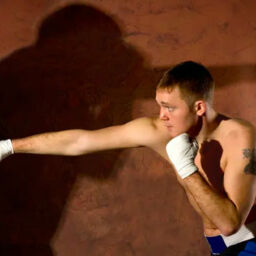
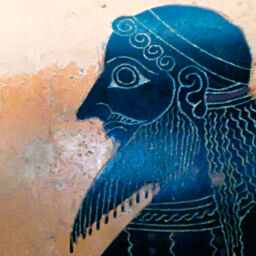

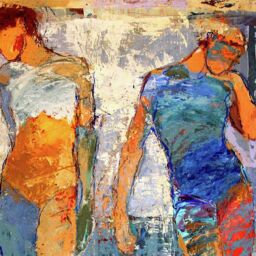
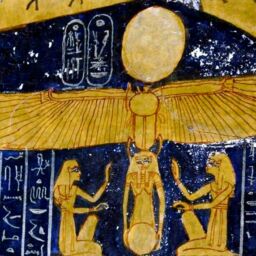
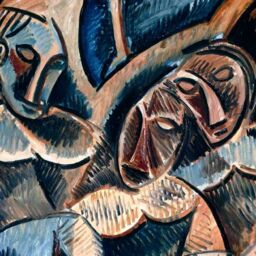
As Jung said, “Only an exhaustive examination and analysis of [somebody’s] biography would be able to establish the rightness of [a particular type] supposition. My conjecture is based on a variety of impressions, which I refrain from mentioning here for lack of sufficient evidence to support them.” -“Psychological Types,” C.G. Jung, p. 173
Like Jung in this instance, I am insufficiently familiar with Woody to argue decently for my type hypothesis on biographical grounds. I am grateful that we both experience him as a thinking type at least, so that’s a point of agreement. If I cling a bit to my own idea, I notice I see more of an informing rather than directing style in Woody’s presentation and body movement (a reference to the ideas of David Keirsey). Woody has always seemed insufficiently commanding for me affiliate him to ISTP, but perhaps having a father with ISTP preferences has prejudiced me.
I agree it likely that Mia Farrow is an introverted feeling type, but I’m not confident I would credit her with intuition. Of course, I am again speaking from distant impressions and not a lengthy scrutiny, so I’m open to altering my views.
Your home theatre setup sounds positively glamorous. We likewise enjoy a corporate caliber projector and toss DVDs into a computer for our occasional movie-watching binges. It’s heavenly!
Interesting you should mention Woody Allen, my INFJ has discussed him frequently. Typing celebrities can be difficult, but in this case he can be probably be tagged as either INTP or ISTP, which are similar types. We ended up believing ISTP. For one thing he’s always been intensely physical. Lifelong interest in sports (playing and watching), lifelong exerciser and in particular he was always actively interested in girls, even as a little boy. Anecdotally this corresponds to my ISTP brother, whereas I was romantically a late bloomer, no interest in sports and so forth (not to say that an INTP can’t like sports or be an early bloomer). Further we believe he’s actually is an anti-intellectual. From his movies people commonly believe he’s intellectual, but he himself says he’s not. INTP’s are usually delighted to be called so and consider themselves intellectuals, whereas while ISTP’s love technical intelligence, they generally don’t like theory as much, abstraction and intellectualism.
Be that as it may, the topic of him and Soon-Yi is a complex one, not least if you consider Mia Farrow as a likely INFP. But it could be said that perhaps he simply has an immature and undeveloped anima which contributed to the events also. At any rate thats probably best for another forum.
On the TV, yeah I haven’t had one for decades. But my recent house had a perfect place for a real home theater and projector, so it’s OK because really it’s a “Cinema” 🙂
I am delighted that you gained some psychological insights from my comments. A belated thought came up for me about a celebrity who is perhaps having some “trickster struggles.” It is my hypothesis that Woody Allen perhaps has preferences for INTP, and certainly his sexual proclivities have been, ah, “borderline” and morally questionable. So that’s another anecdote that may add some additional fuel to the fire and provide additional insights. Woody’s integrity has certainly been called into question, and the ethical ramifications of his behavior have caused great difficulty for many folks in Hollywood who have to decide whose “side” to be on. (Questionable morality is a common signifier of trickster activity.)
I confess that I have not seen “Extant” yet due to not having a television in my house. However, I know the creator, Mickey Fisher! Mickey was in the writer’s group that I’ve been a member of for about 17 years now, so I can truly say that I knew him before he became famous. He’s a super nice guy, so I’m really happy for him, and I will catch up with his series eventually. But, as with most things trickster, the synchronicity boggles my mind…
VJ,
Thanks for the in-depth comment. My wife is an INFJ who has been to decades of depth therapy, so I’m used to these kinds of discussions 🙂
After sleeping on my comment and reading your wonderfully detailed response I’ll agree now with the automaton as trickster characterization. It does play multiple roles and is a complex character but I’ll agree trickster is one of them. Consider the scene where he’s sleeping and the automaton is (almost creepily) staring at him. He proceeds to have nightmares, with a reference to a historically true and famous train accident that occurred at the station that Méliès worked at and is the scene for the movie. He wakes up to see the automaton silently still looking at him, clearly the thing is messing with him here (I’ll have to rewatch that scene but I think the moonlight is streaming in the window, another individuation reference)
At other parts of the movie I recall now thinking the device almost had a sly, cunning look on its face. It seems to go through two actually, either innocent and sweet or due to the lighting they used something almost cunning. Obviously these are two prominent faces of the trickster. Otherwise thanks for your other references which I’ll consider carefully.
On the second part, yes the main trouble I’m having is seeing Se as a trickster function. I come from a Se family (being the lone intuitive) so associate that with outdoorsy people, sports, light conversation and heavy food (i.e. nothing I’m interested in.) However the anecdotes you gave from your personal experience hit me like a lightning bolt, i.e. the sex toys at the white elephant party. I’ve been a life long Three Stooges fan. I don’t laugh at much, but _physical humor_ gets me every time, the grossest and stupidest the better. Likewise my son is (oddly?) an INTP also, has the same love of the Stooges, and loves potty humor that is a ‘little’ below is age. Now that I think of it with age my funny bone has matured somewhat and other comedians now give me a laugh, which I’ll take as a sign of greater individuation and growth. This is different from my humor, I’ve always been considered funny, with my shtick being to take things out of context. S dominants generally like that kind of humor, while the NF’s in my life love it when I make caustically intelligent commentary about people.
On the shadier side of Se, we have a INTP friend who gives me many examples of this kind of behavior. On my part, well I depend on intellectual property protection for my livelihood, so don’t do to others what I don’t want done to me. But I recognize parts of my psyche that at least has the desire to be less than reputable.
Well, I have a lot to think about, thanks so much for your answers. I’ve been unsure of the 8 function model but this provides some real evidence from my experience for it’s validity. Along these lines you might be interested in the “Extant” SciFi series which I’ve been watching recently. In it I’m seeing very similar themes as here – and android boy who is looking for his purpose (and guess what? he picks up a broken simpler robot and wants to fix it) and who is trying to become a person. I haven’t analyzed it yet (am simply enjoying it for now) but I’m seeing patterns which reminded me of this article.
Overall I fully agree with the usefulness of analyzing cinema in this context. I doubt the writers are even conscious of what they’re doing, they are just trying to construct a good story. What makes a good story? Opposition for one thing*. Jung’s theory is beautifully constructed theory of opposition and I think is the key to understanding it, so its not surprising that writers would mimic these patterns. Its analogous to how Western classical composers wrote music that mirrored the harmonic series – the physics of tone. They didn’t know anything about the physics of why instruments sound different, they were just after what sounded good, which naturally follows from the physics of sound if you have an ear for it.
* Which perhaps is a Catch-22. Why do humans like stories about opposition that works itself out? Answer, because our psyches are constructed this way. Why are our psyches constructed this way? Because it gives us psychic energy. Again with the music analogy, western music is a history of the study of dissonance and resolution which I believe also mirrors this phenomenon.
Such great questions you ask! My depth psychological side is thrilled.
What you have underscored is the difficulty of “typing” any of the movie’s figures based on one’s current knowledge and understanding, with the added burden of conveying it in academic terms. A couple of years out from publishing this article, I might be inclined to type the figures differently based on the evolution of my own knowledge, and after having deep conversations with others in the type community. Overall I have realized that the ultimate point is not about being “right” or “wrong,” but about a willingness to ask ever-deeper questions and discover new truths. This is how we learn.
Following are some statements that I think provide the automaton validity as a trickster figure (there is a lot of beautiful writing about this figure):
Jung said, “Tricksters preside over moments of passage, rupture, and transformation. Tricksters appear to model change and possibilities.” . . . The Trickster “is both material and spiritual.” I daresay the automaton enigmatically “presided over” Hugo’s whole transformation process. He was integral to changing Hugo both symbolically and circumstantially, psychologically and concretely.
Trickster “is the process by which the lower and material is transformed into the higher and spiritual, and vice versa.” Via the automaton, Hugo is transformed from being a lowly waif, discarded by Paris society, to a beloved child at the center of a family and held in high regard. He also restores that which has been lost to the culture, its artistic legacy.
Trickster “represents on the one hand the self and on the other the individuation process and, because of the limitless number of his names, also the collective unconscious.” I agree with your perceptive remark that the automaton is an echo of the figure of Hugo himself – he seems to represent Hugo’s “self.” Without the automaton, “Hugo” would merely be a Dickensian fable about another lost waif who merely fell through the cracks of society ala Oliver Twist. (This is why I appreciate Jung’s reference to the collective unconscious above – because Hugo, and boys like him, were in fact abandoned to the collective unconscious in the culture of that period. They were forgotten children.) By its very existence, the automaton figure connects the tale to a magical realm; exposes a secret; and revivifies a fantastical filmmaking world as delicious as Narnia or Middle Earth populated by equally astounding figures (captured on celluloid).
Combs and Holland described “Hermes in the role of psychopompos, literally the ‘spirit who shows the way,’ or Guide of Souls to the underworld.” I find this to be a perceptive description of the automaton’s role – he acted as an enigmatic spirit who surprisingly showed Hugo the way out of his difficulties. If Hugo had not remained loyal to the automaton, the film could not have ended the way it did. It was only through his fidelity to this mysterious figure that his future is realized to the degree that it is. Without this figure, Hugo would have remained lost, an eternally tragic figure and symbol of Paris’s unconsciousness of the times.
Combs and Holland also state, “Hermes brings the numinous power of the unconscious into the world of ordinary experience, carrying with it the capacity to catalyze synchronistic coincidences.” At the film’s climax, the automaton is shown to be the uniting factor behind all of the synchronicities that occurred in the film – from Melies ridding himself of it, to Hugo’s father restoring it, to Hugo himself hanging onto it and trying to repair it for reasons unknown even to himself. The automaton is the mysterious organizing factor that brings all of these events together.
Those are among the reasons I saw for the automaton being a trickster figure.
The next question is how to relate it to extraverted sensing. My logic at the time was that extraverted sensing is described by Jung thus: “No other human type can equal the extraverted sensation-type in realism. His sense for objective facts is extraordinarily developed. His life is an accumulation of actual experience with concrete objects.” What I noticed about the automaton is its implacable reality – it is so real that it is a metal object without consciousness that requires definite conditions and equipment for it to operate. As Jung says, “the orientation of such an individual corresponds with purely concrete reality.” He further states, “sensation is the concrete manifestation of life — it is simply the fulness of actual living.” There is an “is-ness” about the automaton that is very frustrating – it is what it is, and there’s just no arguing with it (even though Hugo tries to). Like the elements of the unconscious, we want to deny the reality of these functions – they are inconvenient and difficult to cope with. Life would be easier without them inconveniencing us. Why are they uncooperative?
When I “typed” the figure, it was these literal dimensions of the automaton that were foremost in my mind, even though the automaton is also highly symbolic. If I had it to do over, I might argue for the automaton figure representing extraverted thinking or possibly introverted intuition, and I could make equally sound arguments for either… Hugo’s age was certainly a factor in my type assignments — given his youth I overlooked the usual perversity and sexual overtones often affiliated with trickster figures, just as I interpreted Isabelle as a “mother figure” rather than an “anima figure” for similar reasons. (Today I daresay I might do it differently.)
The question you seem to be ultimately asking, however, is how extraverted sensing is a “trickster” function for an individual with INTP preferences. I would suggest that forays into the mythopoetic realm of movies and mythology are less useful for answering that question. It is only through a fearless inventory of one’s own life that such knowledge is achieved (although assistance from a knowledgeable and well-trained coach is invaluable). What do you lie about? Where are you slippery and untrustworthy? These are some rather pointed questions designed to identify one’s trickster function.
Relying on the definitions I share in my program that teaches the type functions in great detail, “Can You Spot It?” (http://www.CanYouSpotIt.com) I might offer a few personal anecdotes that could stimulate some possibilities for you. First of all, I attended a white elephant party once, and someone with INTP preferences contributed sex toys as their gifts. They found them quite hysterical and invigorating. This gave me some insight about how extraverted sensation could show up as a trickster figure in that type pattern. The second anecdote is about how, over a three-month period, two acquaintances with INFP preferences and one with INTP preferences (both patterns sharing extraverted sensation as their “trickster” function), all declared partial bankruptcies in order to dig themselves out of financial holes they had gotten themselves into. I know INFP’s who have “cut corners” by engaging in plagiarism, I have seen requests to “pirate” my products, and I know one INFP capitalizing on the work of John Beebe who has never attended a single Beebe workshop and rationalizes that it is because of their inadequate funds – one might call them a “poser” or “imposter.” Whatever term one uses, surely you can see how shady such behaviors are, and how the individual’s integrity is compromised thereby. This is the duplicitous nature of the Trickster.
These examples, being a bit more concrete and pointed to real world experiences, may provide a better understanding of the archetypal nature of the trickster as expressed through the extraverted sensation function. Additional insights rely on your own ability to make a fearless moral inventory, admittedly never an easy task for any of us.
Thanks for this piece, since reading it I bought the movie and have enjoyed it several times. One thing puzzles me however which is the role of the automaton, which you put as the trickster/Se. Clearly from the screen play perspective the automaton, as the focus of Hugo, serves as a representation and focus of the Hugo’s journey. The fixing of it moves along the plot and ties all the characters together as you indicate. But does it really represent Se? It can only do one thing, produce a detailed drawing that it focuses on which seems more Si (detailed sensor perception) rather than Se as expansive sensory. Otherwise it serves as a simplified model of the main character as a thematic device.
Well we have to be forgiving when applying models like this to stories in my view. At any rate the real trouble is seeing how Se is a trickster/messenger for an INTP. If you have any further ideas on this idea (Se as the INTP trickster) I’d appreciate hearing them.
Hi Vicky, sorry I haven’t replied before, but I understand what u are saying.Following from your last point, the great mystery is perhaps not as mystery at all. At times when playing with different perspectives and thoughts. I at times see human as stuck between two world one of the outer and the inner reality. And human is just a mediater between these world. Acting as a bridge, in a sense a source for interpretation. We tend to see humans as being within (inner) and without (outer), but from what I am saying it perhaps and inner world independet of human, humans in the middle(as interpreter within these two worlds), and the outer world also independent of humans….I was wondering is there going to be any article on stress as the 8 model is different from that of the MBTI, and perhaps specific examples of how the cognitve functions behaves in different archetyple shell, as specific examples is very difficult to find, as there is just descriptions without a concrete examples in different resources. Anyways, Thank you Vicky Jo, for a taking the time to answer my questions 🙂 Means a lot.
It is sometimes thought that the functions are a series of boxes we inhabit. And then people wonder whether they are permitted to do “box-jumping.” (I have encountered declarations along the lines of, “I’m an INTJ but sometimes I’m an ENFJ, and other days I’m INFP” — this is what I’m referring to as “box-jumping.”) This kind of thinking misrepresents the dynamic nature of type, and keeps us blind to how we “flow” from one process to another throughout our daily lives In my film example, this flow is represented as interactions among characters, since Hugo experiences the different characters in the film as representations of the psychic figures in his “inner” world – Hugo’s “outer” world mirrors the inner world. (This echoes the ancient statement of Hermes Trismegistus: “As above, so below, as within, so without, as the universe, so the soul…”)
Of course, the irony is that Hugo isn’t real at all, nor are any of the characters in the film. At best, they are nothing but pixels of light emitted from a projector. This in itself is the ultimate irony, and fosters questions about the nature of reality itself. According to Jung, we experience the world as a projection. Hugo’s experience of the characters in his world are “projections” of his inner world. From that point of view, there are no boxes … there are only pixels – some light, some dark. This is the great mystery.
Does anyone have insigth to the dynamic of the function. Was wondering being an INTP with a function of Ti Ne Si and Fe. Whether the other functions has to feed the Ti or the function can work by on and itself without being coloured by an Ti perspective. Wondering if for example when using Si it would have to be converted into Ne and so Ti as it being the main function. Would be nice if any can give more insigth how the function feed each other information, is not much on it as I can see.I mean how does the Ne and Si reconcile each other as they are directed into different orientation when being utilised. Or does Ne always have to be in tandem with Ti and so on. And answer to one of my question would be appreciated, from anyone. 🙂 Have a nice day
That is right I meant emits different archetyple energies :). I was also wondering how can we know that a function has not differentiated and how can we differentiate them? No need to answer, I just ask a lot of questions becuase I wonder. But understand if I should be doing the homework myself, which I do, but at times it’s difficult to find sources to answer specific questions. Thank you
-K.L.C
I assume you meant that each function *emits* different archetypal energies…? (rather than “omits”). The way to have a function step outside of its archetypal energy is to have it become more conscious. When it is integrated into consciousness, the function can be “scooped” out of its archetypal shell and be used in a more conscious way. Unfortunately, the superior function tends to be the only function we exercise a high degree of consciousness around and feel capable of making deliberate choices about whether to deploy it in a particular circumstance or not. We may decide to “stand down” and NOT deploy it in a given circumstance. But with the remaining functions, we tend to operate on “auto-pilot” and “knee-jerk reactions” (better known in Jungian literature as “complexes”). For this reason, Jungian psychology was originally named “Complex Psychology.” This condition often changes as we mature, however, and we are less inclined to jump into all-out Good Parent mode, or defensive oppositional stances, for instance. Matters seem less black-and-white and more paradoxical the older and more experienced we become.
-Vicky Jo
Each function omits different archetyple energies, Hero, parents, child and so on…. I was wondering how can we make the function step outside that archetyple energy. Does anyone have an answer?
I’ll hazard an answer to the question of whether the shadow functions may be more differentiated then the inferior function, but please understand that I don’t have any data to back this up. I think it could happen that an individual has had to develop his defense complexes early on, and has then somehow ignored all or part of what Beebe calls “the spine” of the psyche — i.e., dominant, inferior, Opposing Personality and Demonic. It seems that in order for us to develop one function-attitude, we must also have some use of the opposite-attitude function. Since the shadow functions are the opposite-attitude functions, if one of the ego-syntonic functions is not developed, then quite likely its shadow function is not differentiated either. The two function-attitudes may be fused. I think Hanne Urhoj’s article on the Bob Dylan film speaks to this somewhat. In the January 2013 issue.
Does anyone know if there is a book how to interpret dreams in accordance with Beebe model of type. And books that talk about the movement of psychic energy in the psyche and how the ego orientate it itself?
Hei, does anyone know if the opposing personality, senex, and trickster is more differentiated then the inferior, considering they are shadowing the conciouss function? If anyones knows please share.
Hi Em Si!
I appreciate your reply, and no apology is needed. John Beebe has spoken compellingly about the importance of increasing our psychological literacy. The more we think and talk about type, the better. All too frequently type enthusiasts suppose type is nothing more than an MBTI result and overlook its Jungian origins and all the richness that implies. Luckily, the Personality in Depth Journal is seeking to rectify that superficial grasp of typology and restore its dimension of depth. Quite often this means re-thinking the way we have held type in the past. I appreciate your willingness to consider these new ideas.
Warmly,
-Vicky Jo
I must return to my earlier comments and say that while I don’t prefer to analyze a movie by abstract MBTI typing (as I feel it contributes to the idea of ‘fragmentation’ further), I do respect the way in which you’ve managed to do so in this case, and I apologize if my comments came off as harsh.
Great summary Vicky Jo — we need more of this kind of thinking among mental health professionals and the general public alike. 5 stars!
What a fascinating and wonderfully descriptive representation of this method of analysis.This is one of my favorite movies.The visuals and characters are so rich that I see via those beautiful visuals a much clearer vision of the theory. Here is an example of how a theory can be made so spectacularly rich for individuals not always drawn to the theoretical. I am able to envision the theory and your description while the characters journey through this rich,visually stunning movie. Vicki Jo this is a wonderfully clear and informative article.
Hi Em Si,
Thank you for your interesting comments. I appreciate your proposal for using a Freudian lens for analyzing the film — it sounds quite interesting and I encourage you to develop this theme. However, for my article I opted to apply Beebe’s Jungian method of analysis.
As I explained in the third paragraph, “A way to understand a film psychologically is to take its various characters as signifying complexes, parts of a single personality whose internal object relations are undergoing change. In this fashion, the movie as a whole takes on a complete personality with each character representing a function and archetype.” In other words, this was merely an exercise for enhancing our understanding of the movie and of the model. It is vital that the reader comprehend this psychological framework as my premise for the article; otherwise it will indeed seem as though I am “forcing labels on characters, when they could be anyone and everyone,” just as you say. By recognizing that the sum of 8 functions and archetypes represented by the characters comprise a “whole” personality, we identify a type pattern for the film overall — as if it were a person.
I realize this is a vastly different way of “typing” a film than most type enthusiasts are accustomed to, and it takes quite a bit of imagination to do it Beebe’s way. It forces one to break the habit of throwing type codes at characters. I learned a lot from trying out Beebe’s approach, and can hardly watch a movie now without taking a stab at typing the film as a whole personality.
-Vicky Jo
I’m sorry, but you don’t have to be an INTP living in the industrial revolution to think to yourself: the world is one big machine. Heck, I’ve thought that in this era myself as an INFJ. It doesn’t matter what type you are. Your thoughts will range through all of these character’s thoughts and actions. It feels like you’re forcing labels on characters, when they could be anyone and everyone. Regardless of the fact that the actors themselves in reality are (F) ESFP and (M) ISFJ, as most actors usually are (of course with the exception of several ESTJs i.e. Ricky Gervais, John Stewart, and ISTJs i.e. Steven Merchant, Steve Coogan, etc, etc). I think this film would be better analyzed under the lens of Industrial Revolution and the associated symbols for: the ego (reality), the super ego (authority/ideal), and the Id (subconscious desire/trickster) as they come together in the protagonist and secondary characters.
Congratulations, Vicky Jo! You discussed the idea of archetypes in film and literature with me before and it’s instructive to see the idea spelled out here. I’ve never seen the film HUGO (in fact I’ve not heard of it before), but you’ve given me a very good reason to see it!
Vicky… Nice Job. And that is some compliment coming from and INTP!
Neat, I like a lot of this, and now have to watch the movie again with your essay in mind.